Case Studies.
Add Case Study
Our Case Study database tracks 22,657 case studies in the global enterprise technology ecosystem.
Filters allow you to explore case studies quickly and efficiently.
Download Excel
Filters
-
(6,653)
- (2,601)
- (2,127)
- (945)
- View all
-
(5,642)
- (2,469)
- (1,692)
- (826)
- View all
-
(5,571)
- (2,178)
- (1,766)
- (643)
- View all
-
(5,247)
- (2,179)
- (1,715)
- (1,321)
- View all
-
(2,881)
- (1,448)
- (574)
- (376)
- View all
- View all 15 Technologies
- (1,985)
- (1,985)
- (1,915)
- (1,679)
- (1,629)
- View all 42 Industries
- (8,728)
- (4,742)
- (3,618)
- (3,233)
- (2,947)
- View all 13 Functional Areas
- (3,304)
- (2,787)
- (2,603)
- (2,006)
- (1,630)
- View all 129 Use Cases
- (13,581)
- (5,296)
- (4,272)
- (3,520)
- (2,856)
- View all 9 Services
- (504)
- (432)
- (416)
- (382)
- (301)
- View all 1083 Suppliers
Selected Filters

|
Bridgestone Sales Thailand's Transformation with Tableau for Enhanced Data Analysis
Bridgestone Sales Thailand, the local trading business for Bridgestone, was facing challenges with its data analysis process. The teams were heavily reliant on spreadsheets for data analysis, which had its limitations. The process was time-consuming, taking two to three hours to extract insights from data. The data had to be consolidated from different sources, including Bridgestone’s ERP, which added to the complexity and inefficiency of the process. The company was in need of a solution that could streamline this process, make it more efficient, and enable informed decision-making in line with the corporate philosophy of Bridgestone.
|
|
|
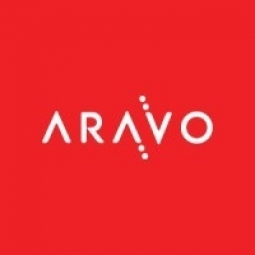
|
GreenFlex Leverages IoT Data for Energy Efficiency with Databricks Lakehouse Platform
GreenFlex, a European leader in environmental management services, energy efficiency, and environmental impact management, was facing a significant challenge in managing and governing the vast amount of data it was collecting. The company gathers energy consumption data from its customers and uses machine learning to identify consumption anomalies and devise energy strategies. However, as the volume of data grew exponentially, GreenFlex needed a simplified way to manage and govern this data. The company needed to make the data easily and securely accessible for data exploration, business intelligence, and machine learning use cases. Additionally, GreenFlex was maintaining three unconnected workspaces for development, staging, and production workloads, leading to complications in dealing with security and access controls over the tables in each workspace. This design also led to issues with data availability across these workspaces.
|
|
|

|
Honeywell's Data Management Transformation with Delta Live Tables
Honeywell, a global provider of industry-specific solutions, is under increasing pressure to reduce energy use, lower costs, and improve efficiency. Their Energy and Environmental Solutions division uses IoT sensors and other technologies to help businesses manage energy demand, reduce energy consumption and carbon emissions, optimize indoor air quality, and improve occupant well-being. This requires Honeywell to collect vast amounts of data from millions of buildings worldwide. These buildings are equipped with thousands of sensors monitoring factors such as temperature, pressure, humidity, and air quality. In addition to this, data is also collected from external sources like weather and pollution data, and information about the buildings themselves. At peak times, Honeywell ingests between 200 to 1,000 events per second for any building, equating to billions of data points per day. Honeywell's existing data infrastructure was struggling to meet this demand, making it difficult for the data team to query and visualize the disparate data to provide customers with fast, high-quality information and analysis.
|
|
|

|
Optimizing Customer Engagement with Databricks Lakehouse: A Case Study on Iterable
Iterable, a company that helps brands optimize and humanize their marketing, was facing challenges with its data infrastructure. The company needed to build personalized and automated customer experiences for its clients, which required harnessing diverse, complex data sets and facilitating rapid prototyping of machine learning models. However, the infrastructure they initially built with AWS native tools, including EMR, was resource-intensive, costly to maintain, and created significant operational overhead. This made it difficult for Iterable to scale the level of data ingestion and rapid prototyping of machine learning models needed to support its customer requirements and respond quickly to changes in the market. Furthermore, the company's AI solutions had to account for diverse data variables, drifts in the model, new regulatory changes, and a growing demand for more privacy protection.
|
|
|

|
Transforming Viewer Experience with IoT: A Case Study of ITV
Over the past decade, the broadcast television industry has undergone significant changes, largely due to the rise of streaming services. These changes have led to shifting viewer expectations, with people now expecting to be able to access a wide range of high-quality programming at any time and on any device. ITV, a British public broadcast television network, faced the challenge of meeting these changing expectations while also managing vast amounts of content data generated by nearly 40 million viewers. The company formerly relied on multiple legacy data platforms, which resulted in data fragmentation. Its data team was similarly fragmented across marketing, commercial advertising and product experience with its own technology stack. When the company launched its new digital strategy, it became clear it would need to modernize its platform and undergo a massive digital transformation with data at the core. ITV sought a platform that would allow it to consolidate its data sources and use analytics, machine learning, rule-based algorithms, and other tools to understand viewer expectations and behavior and improve the user experience.
|
|
|

|
BizCover Accelerates Data Connectivity by 90% with Fivetran
BizCover, Australia’s largest online business insurance provider, was facing a significant challenge in connecting data from various sources. The company's team of engineers had to build unique connectors using their own code, each requiring 40 to 80 hours of engineering time. This approach initially worked when connecting and syncing data from their database and Google Analytics. However, as the number of data sources increased, the task became overwhelming. BizCover needed to pull data from over 20 data sources into its centralized Snowflake data warehouse, with each source requiring its own connector. The company’s data engineers were managing this largely manual process, and BizCover needed to disseminate the insights they were gaining from the data across the core business more efficiently.
|
|
|

|
Code2College Employs IoT to Enhance Student Learning Experience
Code2College, a nonprofit organization aimed at helping minority and low-income students achieve tech/STEM careers, was facing challenges in managing and analyzing student data. The organization's data, including student attendance, grades, and teacher input, was kept in spreadsheets or gathered by word of mouth. This approach was inefficient and time-consuming, especially when specific data on a student's performance or an overall view of the student population was required. The organization used Salesforce for operations and Canvas as a learning management tool. However, extracting information from these platforms to answer a single question would require a day's work, which was untenable given the small size of the data team. The team wanted to centralize their data using Google's BigQuery data warehouse tool to streamline retrieval and expedite responses to student needs. However, the challenge was how to transfer data from platforms like Salesforce and Canvas into BigQuery.
|
|
|

|
Fivetran Facilitates Growth and Efficiency for Frontify's Branding Platform
Frontify, a platform that helps companies grow their brands, faced a significant challenge in building a single source of truth for their data. The company needed to understand how people interacted with their platform to optimize user experience and resource allocation. However, their data analytics team was small, and their data infrastructure was unstable. They relied on custom Python scripts to pull data from business applications into a MySQL database, which often resulted in slow, incomplete data. Their BI tool was user-unfriendly and slow, causing reluctance among employees to use it. The data team was burdened with the task of updating reports and dashboards. To address these issues and become truly data-driven, Frontify needed a scalable and powerful data stack that could be accessible to everyone.
|
|
|

|
GroupM Enhances Client Insights and Saves Time with Fivetran
GroupM, a global media agency based in Oslo, was facing challenges in collecting and analyzing data for their clients. The agency, which serves over 200 clients and provides shared services for other agencies in the group, was using Supermetrics to pull marketing data directly into Google Sheets. However, this method was proving to be inefficient and problematic. Pipelines would occasionally fail due to hard-to-detect issues, and there were formatting problems with the spreadsheets as well as manual errors. Preparing data for analysis in Google BigQuery, GroupM’s data warehouse, was labor-intensive, and clients were demanding faster access to more insights. One client, with a broad business portfolio spanning retail and hotels, was looking for dashboards that could handle historical data analysis as well as day-to-day reports. GroupM was determined to find a more robust solution.
|
|
|

|
Hashtag You's Transformation into a Data-Centric Company with Fivetran
Hashtag You, a brand builder in the direct-to-consumer e-commerce sector, faced a significant challenge in leveraging and structuring data within its organization. As a data-driven company, the use of analytics in marketing, product and customer analytics, and operational analytics was crucial to its business model. Initially, Hashtag You implemented several piecemeal solutions through Google Sheets with self-created data pipelines. However, the company soon realized the need for a centralized and scalable approach to data ingestion. The challenge was not only to establish robust data pipelines but also to connect new data sources quickly and easily. The company needed a solution that would allow non-data specialists to make these connections. Furthermore, the company had to manage advertising across various platforms, combine marketing and webshop data, link with other data pipelines, and analyze campaign performance.
|
|
|

|
Houseware's Transformation: Building Data Apps with Powered by Fivetran
Houseware, a software development company with less than 20 employees, was facing significant challenges in providing a platform and toolkit for its customers to build internal data products. The company's goal was to go beyond the scope of general analytics and data visualization tools, delivering metrics such as ARR, NRR, customer churn, conversion rate, and other KPIs. However, they were struggling with a lack of data insight, reliability, and availability. Their marketing campaigns were inefficient, and they were unable to turn data into customer retention optimizations. The trust in data was decreasing due to errors. Users had to learn data analytics tools and database methods, such as table joins, and develop custom metrics from scratch. Data dashboards and analytics often broke down, took too long to produce results, or required too much custom programming. Poor APIs and data pipelines limited the types of analytics that developers could construct to meet customer needs. The tools produced insights without any actionable recommendations, and building data connectors required lots of programming time and effort.
|
|
|

|
Hunt, Gather Accelerates Operational Insights by 95% with Fivetran
Hunt, Gather, an Austin-based creative agency, was struggling with limited reporting tools that hindered their ability to share deep performance data with clients. The agency was in dire need of a holistic approach to the reporting of its digital marketing efforts. They required a suite of tools that would enable the collection and analysis of data, and ultimately the generation of key insights, all in a single location. The development team had previously built a few pipelines on their own, but these were time-consuming and costly. It could take up to six months to build pipelines in-house, and the team was also spending significant amounts on ELT platforms that were proving to be inefficient.
|
|
|

|
Fivetran Accelerates Market Entry for ItsaCheckmate with Data-Driven Decisions
The global Covid-19 pandemic forced restaurants worldwide to quickly pivot to delivery and take out services. ItsaCheckmate stepped up to help these restaurants consolidate orders from various ordering apps directly into their existing Point of Sale (POS) systems, eliminating the need to manually transfer the orders to the POS and manage their menus on multiple platforms. With business booming, ItsaCheckmate decided it needed to use data to maintain quality experiences for its customers and enable the support staff to handle an increase in orders. The data was available, but it was cost prohibitive for the company to organize and manage it in any meaningful way. The ItsaCheckmate platform is powered by dozens of integrations with online ordering apps such as Uber Eats, Grubhub, and DoorDash, as well as with all the POS systems that large chains or small mom-and-pop restaurants may use. When an order cannot be processed properly, ItsaCheckmate can resolve each individual error in real-time, but analysts need to conduct a thorough and rapid post-event analysis to resolve the underlying issues that cause these errors to arise to begin with. Systematic analysis of this siloed data was a manual process, requiring analysts to pull a list of order errors into an Excel spreadsheet – a process that could take up to a day.
|
|
|

|
Memrise Enhances Online Learning Experience with Fivetran
Memrise, a language learning app used by over 50 million people worldwide, faced a significant challenge in identifying gaps in customer engagement. Despite having a robust cloud-based platform and a commitment to data analytics, the small data team was overwhelmed with coding, manually building data pipelines, and fixing broken APIs. As the customer base grew, the need for a more focused approach to analytics became increasingly critical. The team needed a solution that would allow them to spend less time on technical issues and more time on analyzing data to improve the user experience and drive business growth.
|
|
|
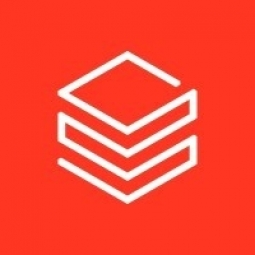
|
Barracuda Networks' Use of Machine Learning on Databricks Lakehouse for Phishing Attack Prevention
Barracuda Networks, a global leader in security, application delivery, and data protection solutions, was faced with the challenge of handling sophisticated phishing emails. The company had built a powerful artificial intelligence engine that uses behavioral analysis to detect attacks and keep malicious actors at bay. However, the sophistication of attackers in creating malicious emails posed a significant challenge. The company needed to assess and identify malicious messages to protect their customers. Additionally, Barracuda Networks offered impersonation protection, a service that prevents malicious actors from disguising their messages as coming from an official source. However, these targeted phishing attacks required the attacker to have personal details about the recipient, making them harder to detect and block. Furthermore, Barracuda faced difficulties with feature engineering. They needed to utilize the right data and do feature engineering on top of that data, which included email text and statistical data. Before the Databricks integration, building features was more difficult with the labeled data spread over multiple months, particularly with the statistical features. Also, keeping track of the features when the data set grew in size was challenging.
|
|
|

|
Leveraging Data Insights for Personalized Customer Experience: A Case Study on ButcherBox
ButcherBox, a young e-commerce company, operates on a monthly subscription-based model, delivering fresh, organic, and ethically sourced meat and seafood to its customers. However, the company faced significant challenges due to the complexity of its operations and the vast amount of data it had to manage. The data, coming from various sources such as email systems and the company's website, was siloed, preventing complete visibility into critical insights needed for strategic and marketing decisions. The data team struggled to deliver timely and accurate reports and insights. The legacy data warehouse environment was proving to be a hindrance to the company's agility and speed, making it difficult to keep up with the changing needs of their growing customer base, improve supply chain operations, and forecast demand.
|
|
|

|
Revolutionizing Autism Diagnosis in Children through IoT and Machine Learning
The process of diagnosing autism in children has been historically plagued by subjectivity and inconsistency. The existing assessments are lengthy, require in-clinic visits, and there is a growing shortage of specialists. Furthermore, disparities in diagnosis based on socioeconomic status, race, gender, and geography have been observed. The average age of diagnosis in the U.S. is 4.3 years, and parents and caregivers often spend up to 3 years seeking answers. Early diagnosis is crucial as it can greatly alter the course of development and may even erase the signs of autism altogether.
|
|
|

|
Transforming Health Insurance: Collective Health's Data Integration with Delta Live Tables and Structured Streaming
Collective Health, a technology company revolutionizing health insurance, faced a significant challenge in managing and integrating data from various partners. The company's mission to simplify employer-led healthcare and improve health outcomes required a robust, flexible infrastructure that could handle vast amounts of data. However, the company's existing data integration architecture was not equipped to handle the evolving business requirements. The schema was constantly changing, and columns that previously contained data started to contain null values. Moreover, the company needed a solution that could ingest files incrementally without having to go through each file previously ingested. The challenge was to find a solution that could handle these complexities while ensuring data quality and scalability.
|
|
|

|
Gong’s Real-Time Customer Feedback Enhances Quotient’s Performance
Quotient Technology, a leading digital promotions and media technology company, was facing a challenge in understanding the unfiltered voice of its customers and anticipating their needs in a constantly changing market. The company needed a solution that would allow them to gain a more authentic and accurate understanding of their customers' sentiments, enabling them to deliver better outcomes. The challenge was not just about course-correcting after the fact, but about being able to point their services in the right direction from the start. The company was also looking for a way to drive visibility regarding revenue strategy and organizational decision-making.
|
|
|
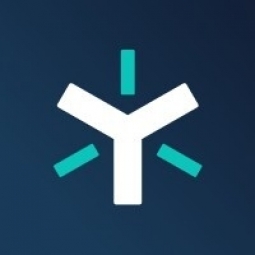
|
KAST Construction's Journey: Saving Time and Improving VDC Process with IoT
KAST Construction, a Florida-based general contractor, was facing inefficiencies in their Virtual Design and Construction (VDC) and project team operations. Despite seeing VDC as a potential tool to enhance project quality through improved collaboration, cost reduction, and safety enhancement, the company was struggling with data management inefficiencies that hindered productivity. The VDC team operated almost independently of the projects they supported, leading to a lot of back and forth with busy project managers. If the VDC team lacked necessary information such as the current budget or schedule, they had to wait for responses from the project manager, slowing down the process and resulting in the loss of scheduled days. Furthermore, project teams who needed the designs, schedules, and budgets from the VDC team often couldn't find the information, leading to wasted time and money.
|
|
|

|
Nimbus Therapeutics Leverages IoT to Automate CRO Data Ingestion and Accelerate Drug Development
Nimbus Therapeutics, a biotech company, was grappling with the challenge of managing increasing volumes of data from multiple experiments and projects. The company's reliance on manual data management processes was proving unsustainable. The team had to validate the data, upload it into the corporate database, reconcile different data formats, and troubleshoot any issues. Human error at any of these steps threatened data integrity. Inefficiency was another challenge as the team had to create a new file or manually update and rename an existing one each time a document was modified. Lack of visibility and accountability was a problem as file update notifications were sent through email, which could easily get lost in crowded inboxes. Stakeholders were dispersed across time zones, which often slowed the process. Content sat for hours or days before the data team started their workday.
|
|
|
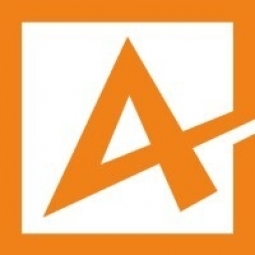
|
CEWE Enhances Digital Workflows Efficiency with New DAM System
CEWE, Europe’s largest photo service provider, faced a significant challenge with the management of its digital assets. Over the last 60 years, CEWE has grown to become the biggest player in the European market for photo services. With the advent of digital photography in the early 2000s, the company's digital archive of marketing assets also expanded. CEWE primarily uses its archive when designing its advertising and marketing activities. Over the years, the need for a media and image database had increased steadily. The company finally decided to introduce a new digital asset management (DAM) system for the future. The requirements for the new DAM system included flexibility, workflow mapping, and the ability to automatically link files that originated from other files or that contain elements of files.
|
|
|

|
Efficient Worldwide Collaboration through Central Database Access: A Case Study on OMICRON
OMICRON, an Austrian company specializing in the development of innovative technologies for electrical power supply, was facing a significant challenge in managing its digital assets. The company had a vast archive of 100,000 digital assets, including pictures, videos, graphics, documents, and audio files. These assets were stored on a file server with a complex folder structure, making it difficult for employees to search and find the necessary assets. The system was particularly inefficient for the 50 creatives and another hundred local and international colleagues who were working with the database. The configuration of the database made searching and finding assets extremely difficult and inefficient. Additionally, the system required a significant amount of effort to train new employees. The need for a more efficient system led the Marketing team to initiate the purchase of a Digital Asset Management (DAM) system.
|
|
|
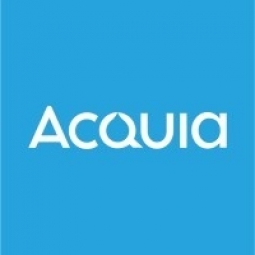
|
Acushnet's Transformation in Content Management with Acquia DAM
Acushnet, a global leader in the golf industry, faced a significant challenge in managing and sharing marketing content across their portfolio of brands. The company, which is the steward of revered brands like Titleist and FootJoy, had teams and partners spread across continents. These stakeholders relied heavily on brand and marketing assets to promote and sell Acushnet products. However, without a centralized location to manage all of this content, assets were scattered across numerous tools and devices. This lack of organization made it difficult to maintain brand consistency and effectively distribute marketing materials.
|
|
|

|
Alliance Laundry Systems: Streamlining Global Content Operations with Acquia DAM
Alliance Laundry Systems, a global manufacturer and marketer of commercial laundry equipment, faced significant challenges with their existing digital asset management (DAM) system. The system lacked the necessary functionality to support their global content operations, creating inefficiencies across numerous workflows. Furthermore, the platform's security infrastructure did not align with the requirements of the General Data Protection Regulation (GDPR). This led to a pressing need for a new DAM solution that could not only meet their current needs but also scale with their business growth.
|
|
|

|
Optimizing Workflows and Enhancing Collaboration: A Case Study on Article's Implementation of Acquia DAM
Article, an e-commerce furniture and decor business, has experienced significant growth since its inception in 2011, delivering products to over 1.5 million North American homes and businesses. With this growth, the need for content has also increased. However, the company faced challenges in managing their content workflows due to the lack of appropriate tools and processes. The content was scattered across various systems, making it difficult to locate the right image, often relying on memory. This lack of a centralized system strained their workflows, hindering their efficiency and productivity.
|
|
|

|
Leveraging IoT for Historical Asset Management: A Case Study of Beam Suntory
Beam Suntory, a company with over 350 years of combined history, faced a significant challenge in managing their historical assets. These assets, which included 100-year old family photographs and advertisements written by Mark Twain, were integral to the company's brand identity. However, without a centralized and searchable repository for these archival contents, it was difficult to incorporate these cultural artifacts into their current brand narrative for use in marketing materials and campaigns. The lack of a unified system for managing these assets posed a significant challenge in maintaining brand consistency and leveraging their unique history for market differentiation.
|
|
|

|
Novavax's Digital Transformation: Scaling Web Presence Globally
Novavax, a biotechnology company, was faced with the challenge of scaling its web presence to meet global demands. Prior to the COVID-19 pandemic, Novavax was a small biotech company with a minimal digital footprint. However, the pandemic and the organization’s vaccine candidate propelled the company onto the world stage, necessitating a robust and scalable digital presence. The company needed to create a future-proof solution that would not limit the digital team as the company grew. The previous site contained a large amount of legacy content that needed to be migrated efficiently to save time and resources. Additionally, Novavax wanted to launch multiple websites simultaneously, including Novavax.com, NovavaxCovidVaccine.com, NovavaxMedInfo.com, WeDoVaccines.com, and KnowOurVax.com.
|
|
|

|
Revitalizing Benenden Health's Asset Management with Asset Bank
Benenden Health, a not-for-profit private healthcare provider, had invested in Asset Bank for managing their 11,000 assets. However, over time, as the company expanded and team members changed, the system became more of an archive than a functional tool. The lack of defined access to folders led to a disorganized and confusing system, causing employees to resort to the network drive for storage and retrieval. The brand team recognized the potential of Asset Bank as a valuable tool if given a much-needed overhaul to make it more manageable and user-friendly. The challenge was to ensure that Benenden Health was getting a return on their investment with Asset Bank and to maximize its potential.
|
|
|

|
Bakers Delight Boosts Monthly Export Goals by 30% with Brandfolder's Content Automation
Bakers Delight, Australia’s most successful bakery franchise, faced a significant challenge with their incumbent, print-oriented, local marketing production system. The existing platform was difficult to use, especially for vital POS elements like basket labels. It was impossible to extract data from the system to demonstrate ROI, and the platform did not support marketing channels like social and digital. The franchise network was requesting over 1,800 custom scope artworks annually from the corporate local marketing team, leading to high quantities of off-brand collateral. The local marketing team was spending all their time producing artwork instead of planning and operationalizing local marketing with individual franchisees to improve sales and community connection and awareness. The lack of data available from the incumbent system and the fast turnaround required for individual artwork requests made it difficult to forecast workload.
|
|




